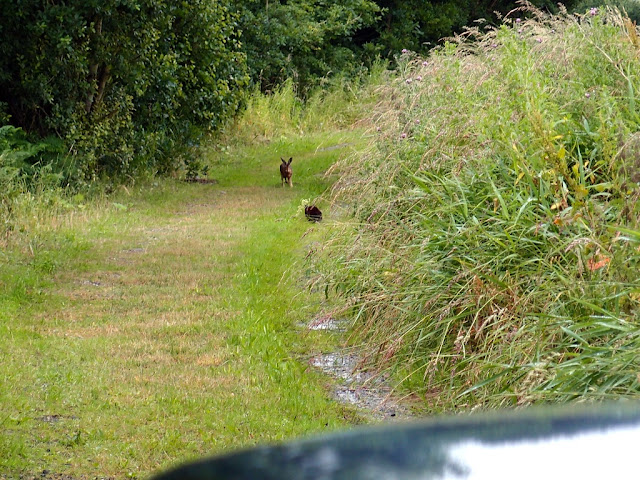Regular readers of this blog may just remember a post (link here) in which I detailed my failure to catch a French ringed Blackcap in a friends garden. While I didn't catch the Blackcap that day, way back on 30/12/14, I did manage to catch a Wren, 3 Dunnocks, 4 Blackbirds, 4 Blue Tits, 2 Coal Tits and a Collared Dove. The chances of getting a recovery from that small catch is extremely low and the chances of getting a long distance recovery is even lower so you can imagine my surprise when I received a recovery report for the Collared Dove and it had been found 308 km away in Scotland.
ES10154 Collared Dove
Ringed 30/12/2014 Hindley Green, near Hindley, Greater Manchester
Found 07/06/2016 Buchlyvie, Stirling, Scotland. 308 km NNW, duration 525 days.
It was reported as being found unwell and that it died overnight.
This is the first recovery I have ever had for a Collared Dove and it prompted me to do a bit of reading up on the species. The section on Collared Dove in the BTO Migration Atlas starts with the usual summary of its colonisation of the UK - first recorded in 1952, first recorded breeding in 1955, firmly established by 1963 and that current abundance broadly mirrors that of the human population. However it goes on to say that dispersal distances have reduced since the mid-1970s and that there is little recent evidence for the long distance dispersal that assisted their spread across Europe and subsequent colonisation of Britain & Ireland.
The Migration Atlas was published in 2002 so I also trawled through the Online Ringing Reports on the BTO website to look at more recent recoveries. The Online Ringing Report currently shows data for the last 9 years (2007 - 2015) and, interestingly, there were only 5 movements of over 100km reported within Britain & Ireland during that period. In addition there were no recoveries abroad of birds ringed in Britain & Ireland and only one foreign ringed Collared Dove was found here, a bird ringed in western France that travelled 843 km north to South Yorkshire. This strongly suggests that the reduction in long distance dispersal since the mid 1970s has been maintained.
The number of Collared Doves ringed each year has been broadly similar for many years with the average for the last 9 years being 771. This is less than I had expected given how common they are but then they are very adept at avoiding and getting out of mist-nets which is the most commonly used trapping method employed by ringers. Even looking all the way back to 1966 the annual totals are generally in the mid to high hundreds and only exceed the 1,000 mark occasionally, with the highest total being 1,817 in 1971, so the continued low occurrence of long distance movements over the last 9 years isn't a result of fewer Collared Doves being ringed each year.
So the recent recovery of ES10154 in Scotland is more unusual than I initially realised as reports of long distance movements are less than annual and seem likely to remain that way. It's hardly surprising that Collared Doves became more sedentary following the colonisation of our islands as those birds that continued to disperse over long distances to the west or northwest would increasingly find themselves over the sea and perish. It seems, therefore, that long distance dispersal has largely been bred out of British and Irish Collared Doves and that long distance movements will remain the exception and serve as an occasional reminder of a previously more commonly held trait that helped the species spread from their ancestral haunts in Turkey and the Middle East.
 |
| Collared Dove |
References:
BTO, Wernham C., et al. ‘’The Migration
Atlas: Movements of the Birds of Britain and Ireland.’’ London: T & AD Poyser Ltd (A & C Black) (2002).
Robinson,
R.A., Leech, D.I. & Clark, J.A.(2015) The Online Demography Report: Bird
ringing and nest recording in Britain & Ireland in 2015 BTO, Thetford (link here)























